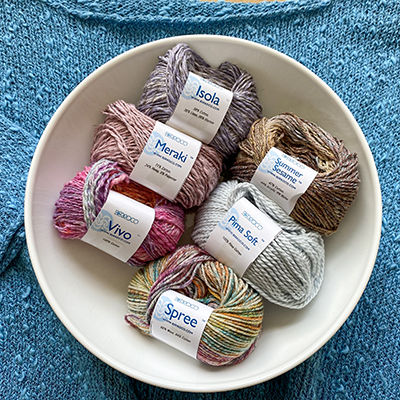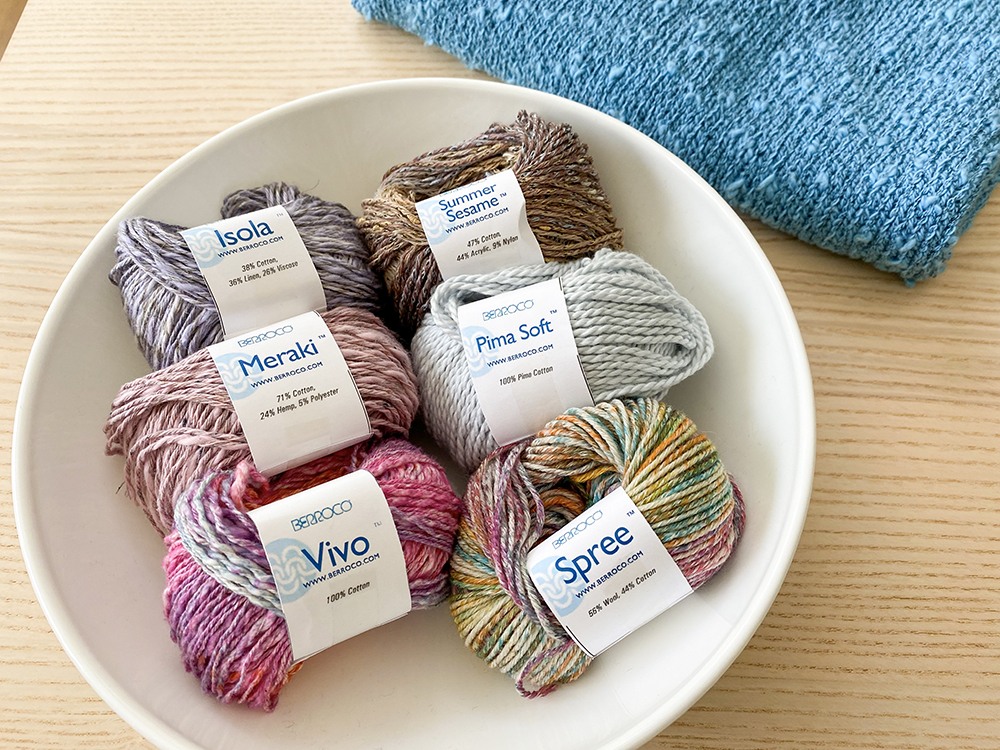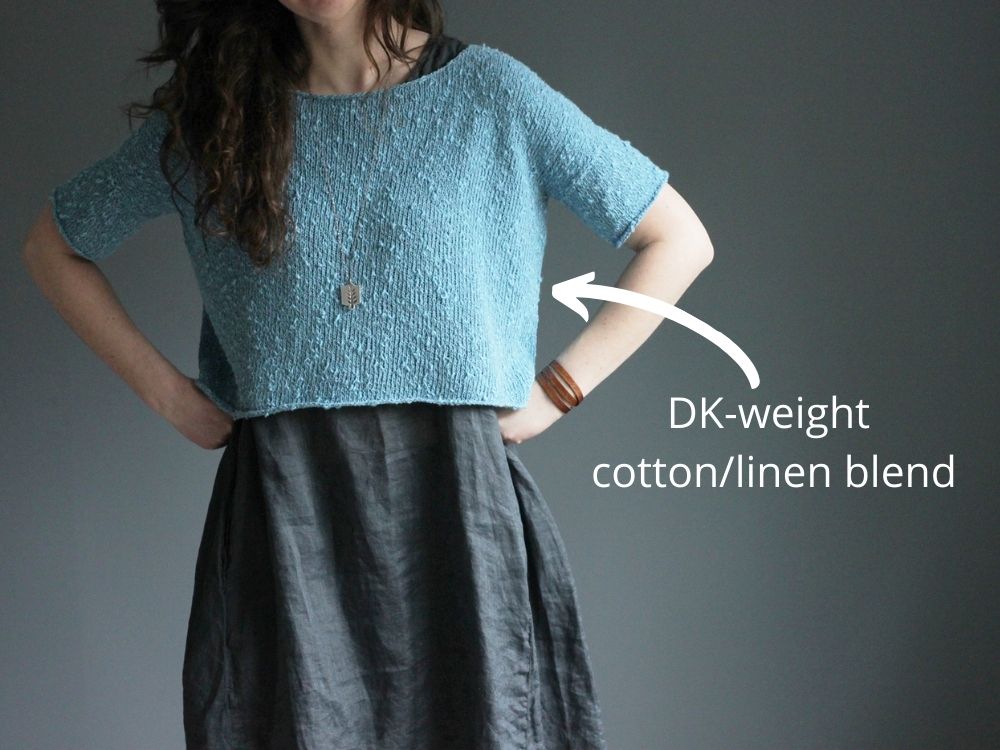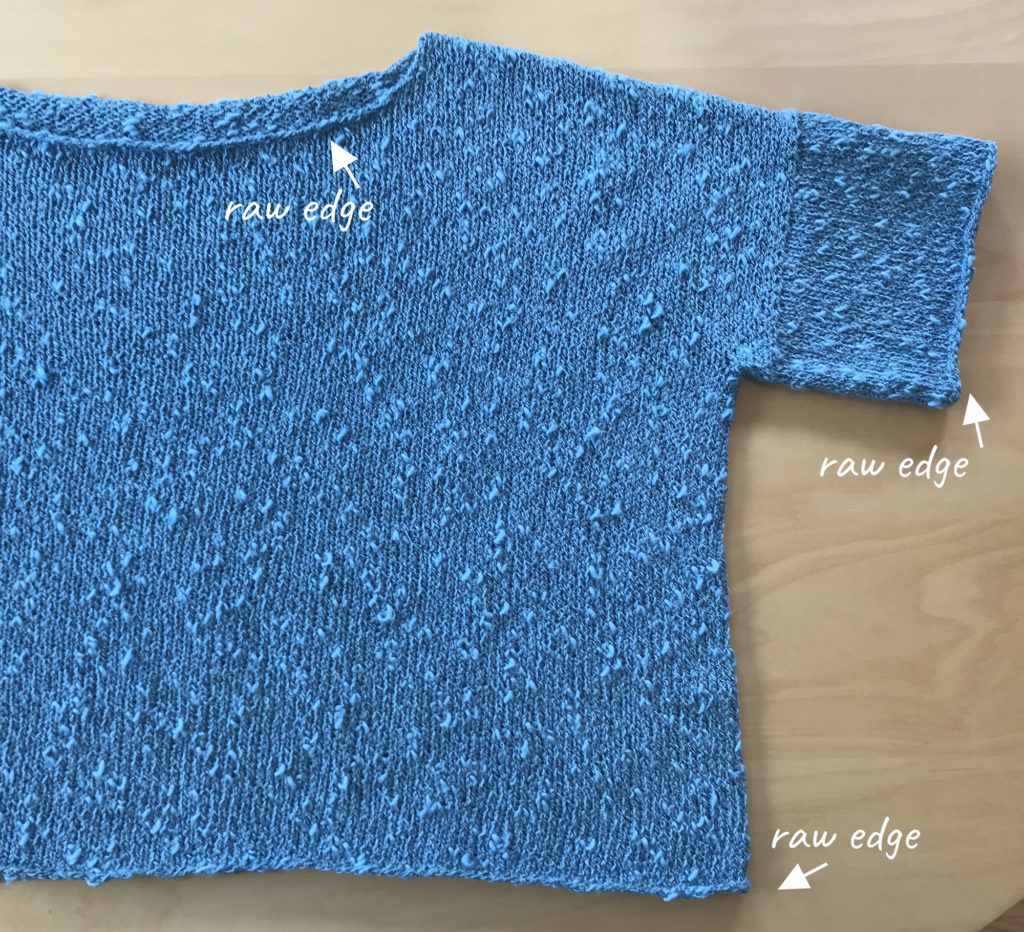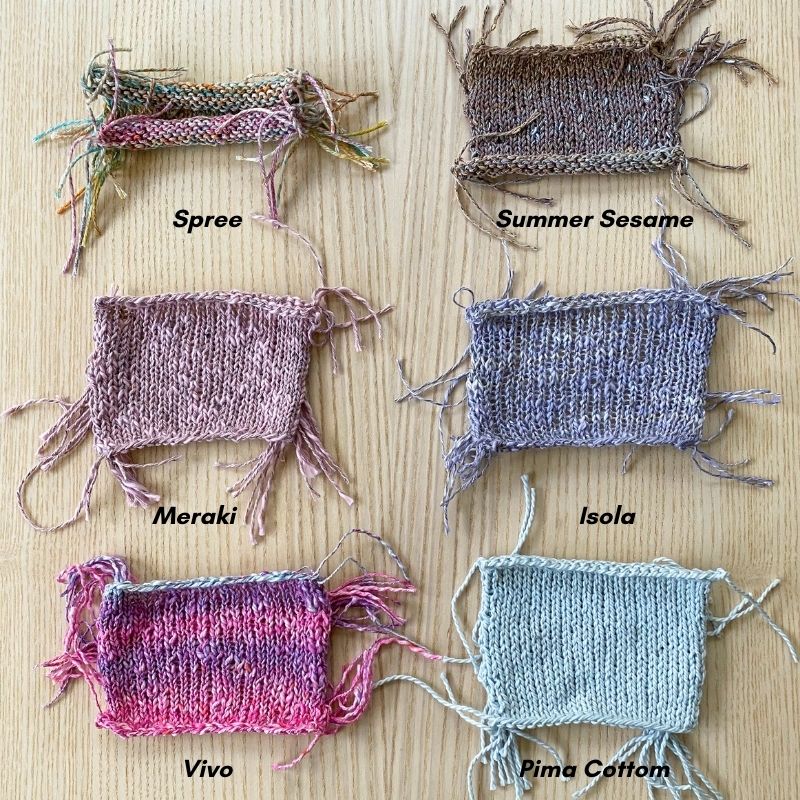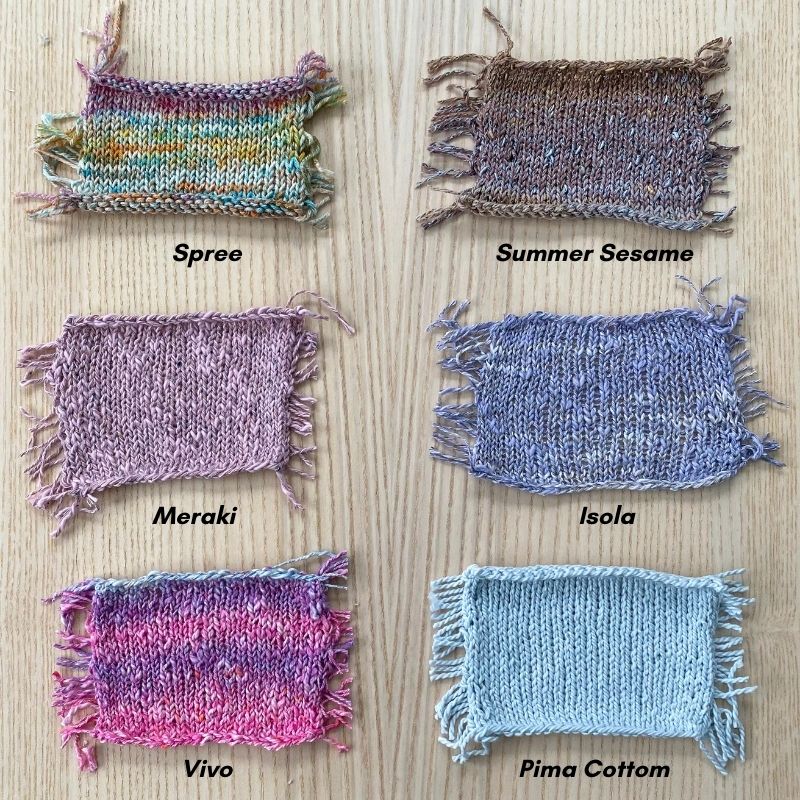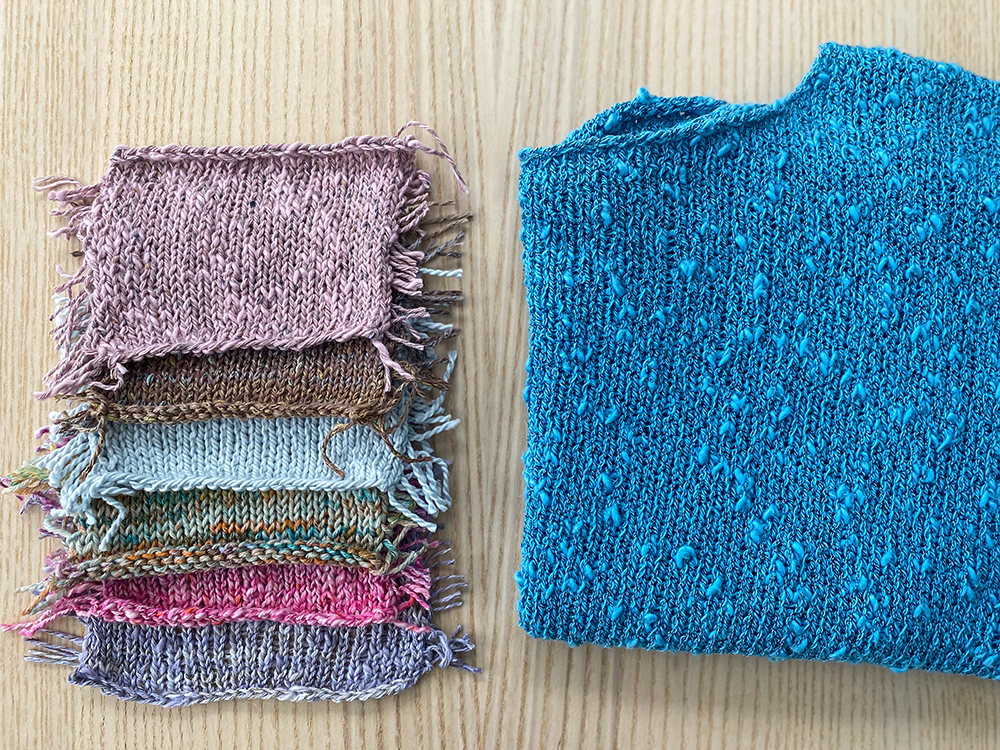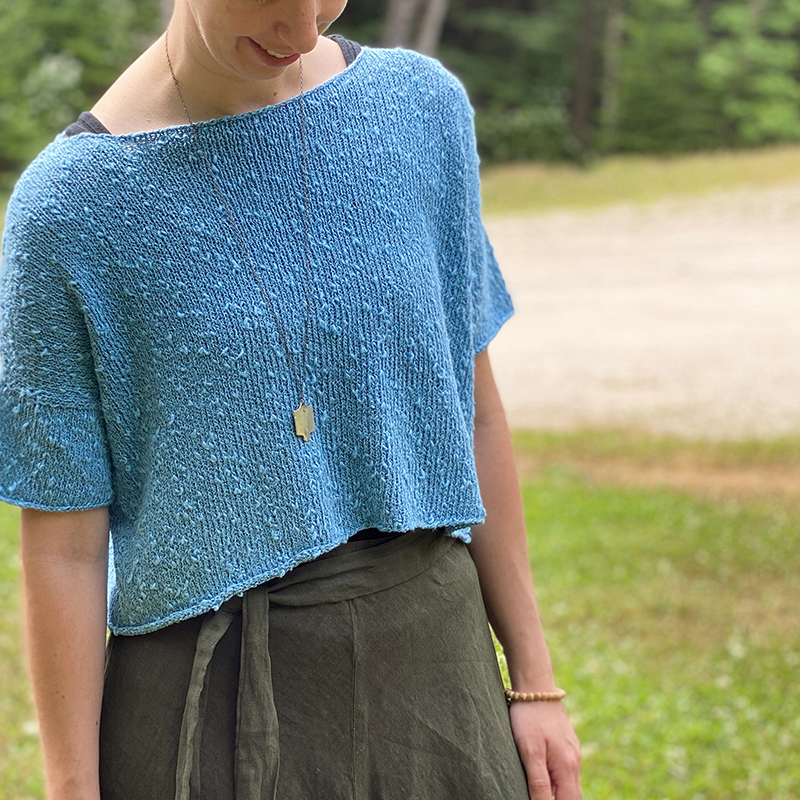Snow is still on the ground here in Maine but soon Spring will be here and so I thought it was a great time to talk about some new cotton and linen yarns. What inspired me was receiving some mini skeins of Berroco’s new Spring yarns, featured below.
I realized that all of them could be possible yarn substitutions for my Castaway tee – I’ve been looking for yarn ideas for this top as the original yarn I used (Berroco’s Quinoa) was discontinued. It needed a DK-weight and ideally some kind of cotton/linen blend.
Why do I want this kind of blend? Not only because I intended this piece to be a warm-weather-friendly garment, but also because the edges of Castaway are “raw”, i.e, there’s no trim and it’s just plain stockinette stitch. So unless you add a trim to it, you need to use a non-wool yarn that will lay relatively flat and not roll in plain stockinette stitch.
So as I was studying the new Berroco Spring yarns I thought that it would be a great opportunity to experiment and see which might be the best option for Castaway. Plus it could be a good way to show which yarns may not be the best option due to this “edge rolling” issue. So let’s dive in!
The Swatches…
First, let me outline the yarns I swatched and what each of their fiber contents are. They are all considered DK-weight (and keep in mind, my original Castaway yarn was 91% Cotton, 9% Nylon):
- Spree: 56% Wool, 44% Cotton
- Summer Sesame: 47% Cotton, 44% Acrylic, 9% Nylon
- Meraki: 71% Cotton, 24% Hemp, 5% Polyester
- Isola: 38% Cotton, 36% Linen, 26% Viscose
- Vivo: 100% Cotton
- Pima Soft: 100% Pima Cotton
I swatched all of the yarns on a US 6 needle and I worked in Stockinette stitch in the round since the body of Castaway is knit in the round (if you’re new to swatching in the round, check out my tutorial here). Below is a photo of all of them before blocking. As you can see, I can almost tell right away which ones may not be good options as some are rolling a bit (and one is rolling A LOT):
So even before blocking I can tell there are probably at least 2 yarns (Spree and Summer Sesame) that, if I were to use them for Castaway, that I would need to add a ribbing or garter trim to the bottom hem and sleeve edges because the edges are rolling (Wow-Spree is definitely one of those! But that should come as no surprise because it’s the one yarn with wool in it). But let’s see what blocking did…
So even the super-rolling Spree flattened out a bit, but as you can see it still has a significant roll to it. Summer Sesame’s roll relaxed a bit but if I were to use that one I would still consider a trim because it’s more of a roll than I would prefer. Same goes for Pima Cotton – it’s definitely flatter than Spree or Summer Sesame, but you can see that the top and bottom edges want to roll (they’re kind of on the verge and I can imagine as you wear the garment it will start rolling).
In terms of finding a yarn that most closely mimics the original Quinoa, I would say Meraki and Isola are my top pics. Meraki’s bottom and top edges were pretty flat even before blocking, so that tells me that the likelihood of significant rolling in Castaway would be low. And if it did roll a bit, then blocking/steaming would definitely flatten it out. And same goes for Isola. Plus both have a bit of the thick/thin texture going on which is very similar to the original yarn.
But really, all of these yarns are good options and I enjoyed swatching all of them. I would just recommend that you add a non-rolling trim (like ribbing or garter) to the bottom of the garment (and sleeve edges) if you use Spree, Summer Sesame or Pima Cotton. I have a tips page associated with the Castaway pattern (link provided in the pattern PDF) that goes into more detail about how and where to add that trim (and it includes a photo of a Castaway knit with trim so you can see what it looks like as well!).
But if you are looking for a yarn that really mimics the Quinoa yarn, then Meraki or Isola are great options to consider!
Interested in making your own Castaway top? It’s a great little layering tee and a good beginner project too if you are new to garment knits. Click here for all of the pattern details and to purchase the downloadable PDF!

